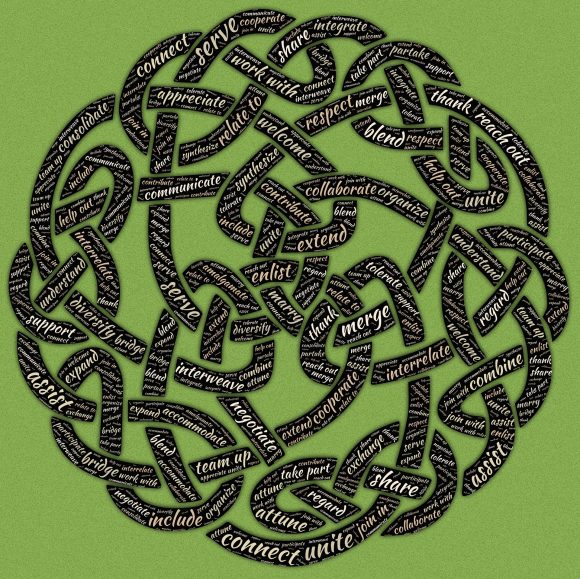Technology to Support Collaborative Learning Pairing pedagogy with technology
May 9, 2017
Collaborative learning is a pedagogical method often used to help students build advanced skills with material by using a social learning model. It is based in social learning theory, such as Lev Vygotsky’s foundational ideas on the Zone of Proximal Development (ZPD) (summarized, this means the learning one can achieve by being paired with and helped by someone who knows more). Social learning often works from the assumption that we either learn from each other (such as in the case of ZPD) or we are more capable as a collective (such as in the case of distributed cognition). The popularity of collaborative learning has increased during the past few decades. (See more on the pedagogy here, Cornell University on Collaborative Learning). Even better, in the past decade, collaborative learning has found new support in technologies made specifically for group work and collaboration.
theory, such as Lev Vygotsky’s foundational ideas on the Zone of Proximal Development (ZPD) (summarized, this means the learning one can achieve by being paired with and helped by someone who knows more). Social learning often works from the assumption that we either learn from each other (such as in the case of ZPD) or we are more capable as a collective (such as in the case of distributed cognition). The popularity of collaborative learning has increased during the past few decades. (See more on the pedagogy here, Cornell University on Collaborative Learning). Even better, in the past decade, collaborative learning has found new support in technologies made specifically for group work and collaboration.
In order to facilitate collaborative learning, an instructor can, of course, use traditional classroom groupings, paper/pen, and live, face-to-face discussions. However, by building a technological repertoire, an instructor can expand these collaborative capabilities both inside and outside of the classroom. Here are some of the technologies people at our institution use to expand the abilities of collaboration through artifact collaboration, discussion, and project management:
Document collaboration such as Google Docs, Sheets, Slides, and Maps or Office 365. Students at our institution already have access to either of these through their enrollment. Both technologies are highly effective for collaboration on documents, spreadsheets, presentations, and maps, among other things. Some examples of use include:
- a spreadsheet of terms in a vocabulary-heavy class built by students on either Google Sheets or Office 365 Excel, checked for accuracy by the instructor, and copied and pasted to Quizlet for instant flash cards
- group presentations done through co-authored Google Slides or PowerPoint
- students who build collaborative maps through Google Maps to show historical places and locations around the world.
Class discussions can be extended online through technologies such as #slack, VoiceThread, or a simpler LMS discussion board (we have Blackboard). #Slack has a great user interface compared to other discussion boards. It’s great for team-building and student-led conversations. VoiceThread adds great visuals, voice, and easy commentary to discussions. Of course, if there are very specific prompts and discussions, an LMS has this functionality and a grading mechanism as well. Here are some tips for Mastering Online Board Facilitation.
Projection management can help groups to manage their group work, and it can be supported with technologies such as Trello or Microsoft Planner. Using a project management program is a great way to prepare students to become better capable of organizing teamwork in their future employment.
Getting a repertoire of technologies to support pedagogical strategies such as collaborative work can help us to pack our TPACK with the right tools and it can extend the benefits of social learning to a broader working platform.


